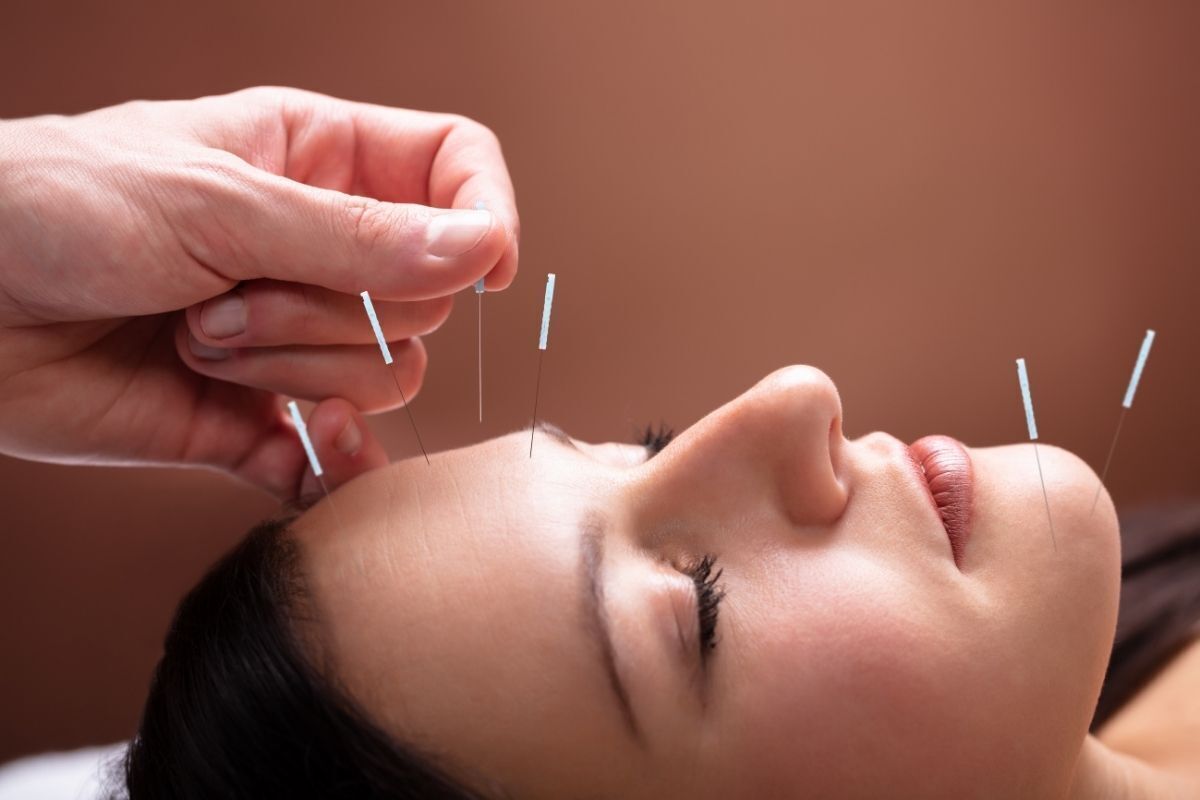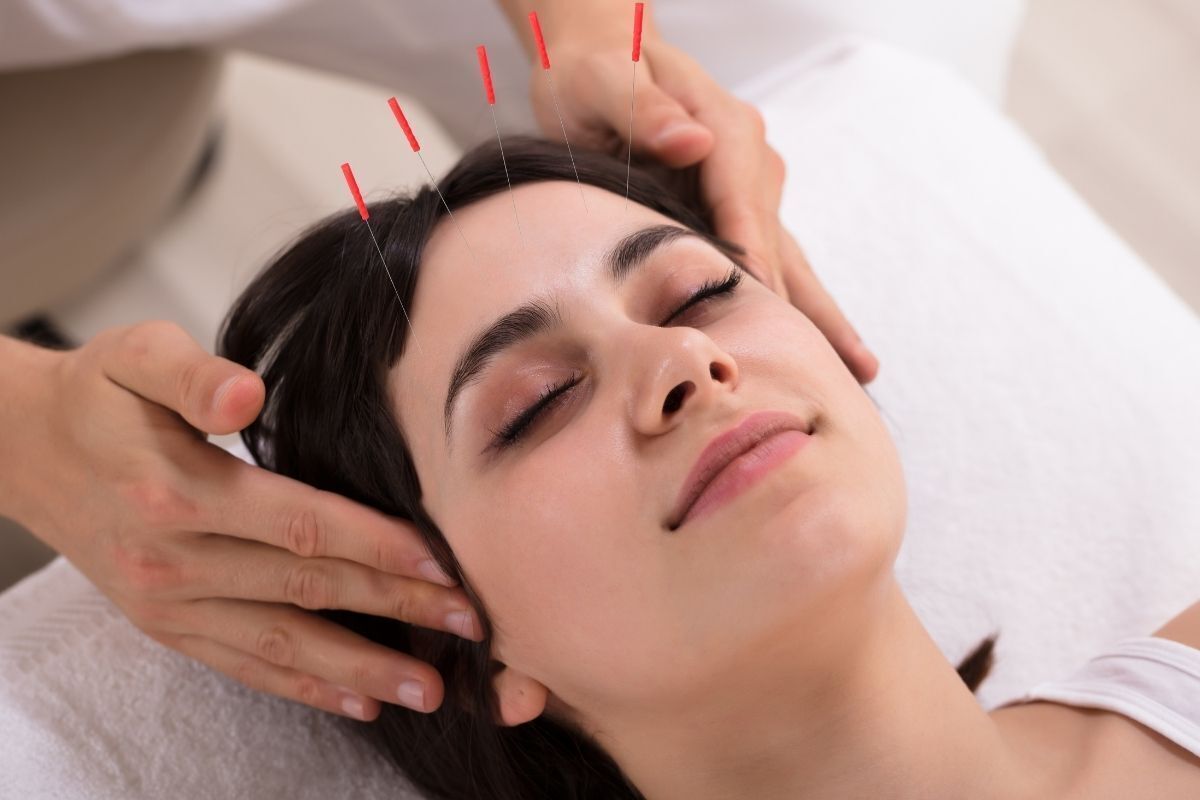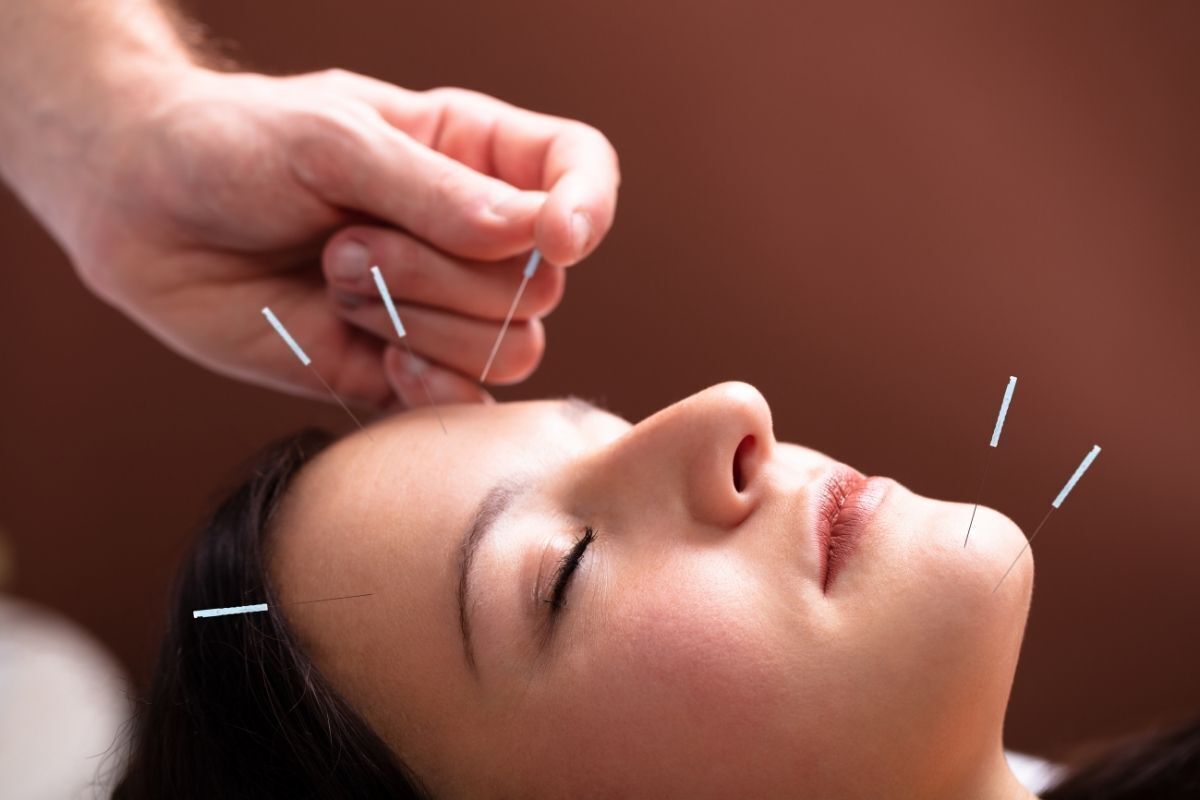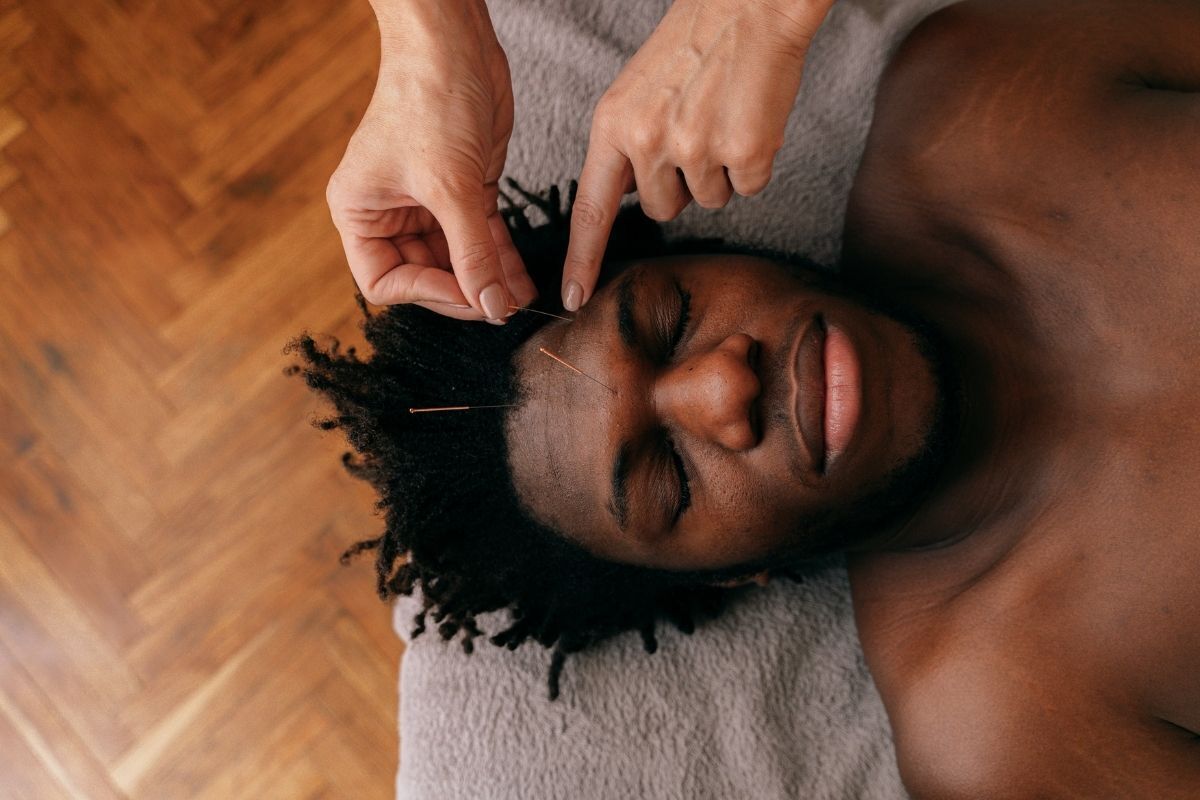Table of contents
Do you know the acupuncture points for anxiety?

Acupuncture, an ancient Chinese technique, is one of the therapies currently used by patients undergoing treatment for anxiety through traditional medicine. It can also treat other disorders that compromise mental well-being, such as depression and drug addiction. The use of needles and seeds helps to balance the corresponding points.
This does not mean that acupuncture is sufficient as the only means of treatment for anxiety. As it is a complex and wide-ranging health issue, the technique can perfectly well be used in addition to professional recommendations. The pressure points relate to organs and meridians that interfere with the appearance of possible anxiety symptoms.
In this way, the individual can enjoy a better quality of life and, depending on the case, reduce the dosage of medication. Read on and find out more about the technique, its points, effects and indications!
Understanding more about acupuncture and anxiety

Anxiety is a disorder that can have various causes. According to Chinese medicine, it is a question of physical and emotional signs that come from energy imbalances in the body's meridians. For this reason, it is necessary for the practitioner to be qualified to practice it. Understanding more about the technique and the symptoms of anxiety helps to understand how these manifestations can be minimized. Follow thereading!
What is acupuncture?
Acupuncture is a form of alternative therapy that is used and disseminated in many different parts of the world. According to its concepts, the vital energy that flows through the body, called Qi, needs to flow in harmony in order to be healthy. When this energy becomes congested in the body's meridians, problems arise.
Depending on the nature of the energy blockage, different symptoms and illnesses can be perceived by the individual. From physical issues to emotional disorders, well-being comes to depend on tools that can rebalance Qi, such as acupuncture.
Finally, the cause of energy congestion can vary, ranging from genetic inheritance or trauma to day-to-day stress.
Principles of acupuncture
Due to its Chinese origins, acupuncture therapy has its principles strongly linked to the foundations of Chinese medicine, which is why one of its principles is the connection between illnesses and the body's energetic imbalance. In practice, this means that the physical and emotional manifestations experienced by individuals originate from something invisible, which is the vital energy that flows through the body.organism.
Similarly, acupuncture works on the principle that each feeling is related to an organ. Therefore, to treat and minimize emotional imbalances, the points where the needles are applied are the parts of the body related to the emotion felt, such as the lungs for sadness.
This connection between organs and feelings stems from a principle that is part of acupuncture, which associates parts of the body with elements of nature. The kidneys, for example, are related to water and subsequently to the feeling of fear. By observing symptoms and the very appearance of the points of application, such as the ears, the therapist is able to balance the vital energy of the being.
Benefits of acupuncture for anxiety
Did you know that acupuncture treatment can produce biochemical responses in the body? By acting on the nervous system, the needles stimulate the production of hormones and substances that help rebalance the individual. In the case of anxiety, the symptoms presented are the starting point for choosing the points.
This is because acupuncture, when used to combat the disorder, involves the release of compounds that promote greater well-being. These can be related to minimizing physical pain or providing stimulation, such as in episodes of anxiety with signs of discouragement and depression. Another benefit is the promotion of greater calm for the individual.
Main causes of anxiety
Anxiety can have various causes and they can often be combined as factors that trigger symptoms and crises of the disorder. The genetic component is one of the possibilities, increasing an individual's chances of manifesting anxiety. Similarly, traumatic situations can become triggers for anxiety.
Hormonal imbalances, traumas, physical issues and highly stressful episodes can all contribute negatively to a person's mental health. Anxiety attacks can therefore arise.
Symptoms and care of anxiety
The symptoms experienced by those who experience crises or occasional episodes of anxiety are divided into physical and emotional. The body may experience tachycardia, shortness of breath, chest tightness, intestinal oscillations, headaches or muscle pain, insomnia, tremors, among other signs.
Emotionally, nervousness is the main symptom of anxiety, but people can experience a lack of concentration, agitation, fear, difficulty relaxing and excessive worry about the future. Irritability is also a common sensation.
Exercising, getting a good night's sleep and being aware of your own triggers are all ways of taking care of yourself. In the event of a crisis, it's important to take shelter and go to a specialist and, if the patient is being monitored, it's always necessary to follow professional recommendations.
How does an acupuncture session for anxiety work?
Acupuncture sessions for anxiety work like any other, with the technique being applied for approximately 30 minutes. In addition to needles, the treatment can be complemented with the use of moxibustion, popularly known as moxa, which is like acupuncture without needles. With it, heat is applied to the area to be treated, and it can be used against physical and emotional symptoms.
To treat anxiety, points are commonly used in different parts of the body, offering stimuli to the nervous system. According to Chinese medicine, the needles have the function of promoting energy balance in the meridians, so that the Qi flows freely. Moxa, on the other hand, is applied punctually and releases accumulated energy flows that turn into illnesses and health problems.
Acupressure points for anxiety

Acupuncture pressure points, which can also be used for finger acupressure, follow an energy correspondence map, so by pressing specific points in the treatment of anxiety, the individual activates them and the symptoms are reduced or eliminated. Here are some of the points!
Heavenly Gate Point
In the region of the ear, the Heavenly Gate is a point that is often used in needling practices. When you think of auriculotherapy, the different points in the ear correspond to different organs, but the Shen Men is even more comprehensive. It interferes with human systems and emotions, which justifies its choice as one of the sites stimulated to combat anxiety symptoms.
Hegu Point
The well-known Hegu point is located at the top of each hand, between the thumb and forefinger. As well as the ease of applying pressure with the fingers, the use of needles in the area helps to relieve physical pain, particularly in the head and neck. Energetically, stimulating the Hegu point dissipates stress and mental confusion and cleanses the individual. The point also revitalizes the Qi flow.
Shen Men Point
The Shen Men is a point just below the wrist line, on the inner side of the arm, where a small depression can be felt. It is an area with various indications, such as insomnia and palpitations, and combats anxiety. Its stimulation promotes the flow of energy in the body's meridians and balances emotional issues, as well as calming.
Point of the Great Abyss
Just below the wrist, on the side of the arm near the thumb, is the Great Abyss point. The point is where a small depression is felt, which can be massaged in acupressure treatments. The area can be activated with acupuncture, promoting the relief of anxiety symptoms such as palpitations and chest pain, as well as treating the disorder itself, in addition to other therapies.
Internal Border Point
The Inner Border point is located on the arm, approximately three fingers below the wrist line. Because it is an easily accessible area, it is widely used in acupressure techniques, such as using the fingers to create pressure and relieve anxiety symptoms.
It is a point that stimulates the opening of the chest and allows energy to flow freely through the thorax and also through the heart, and is indicated in cases of anxiety and depression. It is a region that also promotes greater well-being, as it relieves physical pain and minimizes nausea, for example.
Shou San Li Point
The Shou San Li point is traditional and strongly related to longevity in Asian countries. However, it has great potential to bring a sense of relaxation, being one of the areas worked on against anxiety. Activating the point also relieves stress, a symptom typically present in anxiety attacks.
Located just below the knee, when covered with the palm of one hand, Shou San Li is a point that stimulates inner peace and tranquillity.
Shoulder point
The muscles near the shoulders are among those that accumulate the most tension in everyday life and in episodes of anxiety. On both sides of the body, the point is located immediately after the neck, in the direction of each shoulder. It should be used for acupressure with the fingertips, massaging the area.
The activation of the shoulder point, which releases tension and balances the flow of energy, is widely used to relieve stress and headaches.
Toe point
Between the first and second toe, approximately two toes up, is the toe point. This is an area popularly worked on energetically because it relieves physical pain and improves the quality of sleep, a fundamental aspect in cases of anxiety. The disorder, as well as stress, can be relieved with the use of the toe point.
Other acupressure points for anxiety

An interesting detail about Chinese acupuncture is the presence of points on different parts of the body. Although people usually think of the ears, there are several areas that can be pressed to activate positive responses in the body. Here are some other points that are widely used against anxiety!
Top of the head
VG20, or the point at the top of the head, is located in the middle of the skull, with the needle positioned exactly vertically. Stimulating the point with acupuncture promotes greater mental clarity, calms the emotions and helps treat anxiety symptoms. It also improves concentration and memory, important aspects for those suffering from the disorder.
The point located at the top of the head is considered to be the most Yang point in the whole body, which means that it is a fundamental stimulus to promote more balance between the two polarities, because when there is an imbalance, diseases manifest.
Middle of the head
Well-known in acupressure and acupuncture, the mid-head point is one of those used to relieve anxiety and depression. There are several points on the scalp that provide a positive response to symptoms of physical and emotional imbalance, and treatment takes place in the same way as in other areas.
When pressed, it helps to calm the mind and feelings. It is located at four points near the top of the head, towards the two sides, the front and the back.
Middle of the forehead
The point in the middle of the forehead, known as Yintang, is located exactly between the eyebrows. It is a region often used to treat anxiety, as its stimulation is very effective in calming the mind, as well as reducing headaches and dizziness, which are common symptoms for patients. The middle of the forehead is also a point that balances the energy flow of sleep.
Its benefits are noteworthy because they relieve anxiety and combat various symptoms of mental confusion, promoting greater well-being and quality of life.
Neck area
The point between the nose and the upper lip is one of the most commonly worked on points using acupuncture and acupressure techniques. When stimulated with needles or fingertips, this is a region that boosts mood and calms the mind of people suffering from anxiety attacks. It also helps to relieve the typical symptoms of the disorder.
Activating the point in the cheek area also stimulates the balance of vital energy, Qi, which starts to flow harmoniously through the central part of the body.
Upper chin
The face is not the only place where acupuncture can be applied for aesthetic purposes, although it is often remembered. On the upper part of the chin, the area to be worked on is just below the upper lip. This point facilitates the energy flow from the center of the body and unblocks accumulations of energy that cause anxiety symptoms.
The point at the top of the chin is widely used in practices such as EFT, which promotes energy release without the use of needles. For cases of anxiety, it is a stimulus that brings well-being.
Lower clavicle
In the lower region of the collarbone, right in the middle and before the first rib, is the point that helps reduce the symptoms of anxiety. Its action is different from other points, as it energizes the whole body and invigorates the individual. Working in conjunction with other areas and therapies, it is a point that brings greater well-being.
Middle of the chest
The middle of the chest can store stagnant energy, which can lead to feelings of anguish and difficulty interacting. Between the nipples is the point that can be stimulated with acupressure and acupuncture, relieving stress and allowing Qi energy to flow. Because it is a relevant place for emotions, it is used as one of the points against anxiety and its symptoms.
Neck
In the neck, there are two points that can be stimulated in order to minimize symptoms of anxiety in the individual. They are located at the beginning of the cervical spine, one on each side, and can be activated with needles or other techniques. These points tend to accumulate tension, which compromises the body's energetic flow and triggers health problems.
It's worth noting that acupuncture also helps to improve blood circulation in the areas where the therapy is carried out. In practice, this means that the patient is more relaxed, which contributes to a more effective session against anxiety.
Lumbar region
The application of acupuncture needles to the lumbar spine promotes great relaxation in those who undergo the session. This is an area that is often stiff and can cause pain in those who suffer from anxiety attacks, especially in cases of tension in the body as a whole. By activating this point, it is possible to eliminate energy blockages in the area.
Many people think that back stitches only work to treat discomfort in the area itself, which is not true. The important thing is to unblock the points where energy needs to flow to bring more calm and relaxation, such as in the lower back.
Further information about acupuncture

Many people have doubts before starting acupuncture treatment. In addition to the use of needles, seeds can be kept in the ears for a few days in order to increase the pressure on the points. However, the acupuncture protocol depends on each person's needs and is an individual therapy that can be combined with others. Find out more below!
What is acupuncture for and who is it recommended for?
Among the main applications of acupuncture are the use of needles to combat pain and emotional issues and to lose weight. The Chinese technique is ideal for those suffering from respiratory, gastric and orthopaedic diseases, and even to improve sleep quality. Acupuncture helps the body's healing processes and can also be used for aesthetic purposes.
Acupuncture is suitable for any patient, regardless of their age, gender or health condition. Even fully healthy individuals with no symptoms can feel the benefits of the technique, which promotes greater well-being.
How many sessions are needed for anxiety treatment?
It's not possible to determine the specific number of sessions required for anxiety treatments. The patient's assessment is essential, as is a survey of their history, the causes and intensity of the symptoms. In general, therapy is carried out once a week, with the duration at the discretion of the professional in charge.
However, for good results, a minimum of 10 sessions is recommended.
Tips for a good acupuncture session
To get the most out of your acupuncture session, the first step is to relax. Try to think of pleasant situations and avoid using cell phones, talking loudly or talking about topics that could cause agitation. Energetically, it is also advisable to eat a light meal and not drink alcoholic beverages, as well as not making excessive physical effort. Wear comfortable clothes.
Price and where to have a session
Acupuncture treatment is available all over Brazil and is part of the therapies that make up the Unified Health System (SUS). It can therefore be done in different health centers, such as hospitals, as well as clinics and spaces dedicated to alternative therapies. Professionals need to be qualified and can specialize in different areas of application, such as mental health.
Prices vary depending on the specialist and location, ranging from R$50 to over R$200 per session.
Other strategies to control anxiety
In fact, acupuncture represents an effective tool against anxiety. Its ability to reach deep aspects of the being acts directly on the triggers for symptoms, and addressing other strategies makes the treatment more functional.
Thus, resources such as aromatherapy, yoga, meditation and others, in addition to traditional therapies, are part of the care. Find out more below.
The importance of combining therapies
Combining different therapies is one of the most effective ways of combating problems such as anxiety. Due to its wide variety of symptoms and the factors that trigger them, associating various therapeutic components helps to minimize the signs presented. Furthermore, when properly conducted, the process becomes more comprehensive and capable of providing a better quality of life.
Alternative therapies such as acupuncture, meditation and homeopathy can be combined with psychotherapy. Complementary treatments should always be carried out under the supervision of a specialist.
Enjoy the benefits of acupuncture for anxiety!

Acupuncture sessions against anxiety are based on balancing the energy that flows through the body. By healing the individual's energy imbalances, the technique promotes greater health and well-being. According to Chinese medicine, this is the starting point for the appearance of illnesses and symptoms, whether physical, mental or emotional.
Acupuncture is a therapy that is widely indicated for a wide variety of people. In the specific case of anxiety, it helps to control the symptoms of those who are going through periods of physical and emotional manifestations of the disorder, as well as patients undergoing treatment. In all cases, the recommendations of specialists should be followed and can be combined with the practice of acupuncture.
To take advantage of the benefits, go to a qualified professional and have an assessment carried out, after which the therapist can apply the needles to the points where the imbalance is perceived, promoting an improvement in the symptoms of anxiety.

